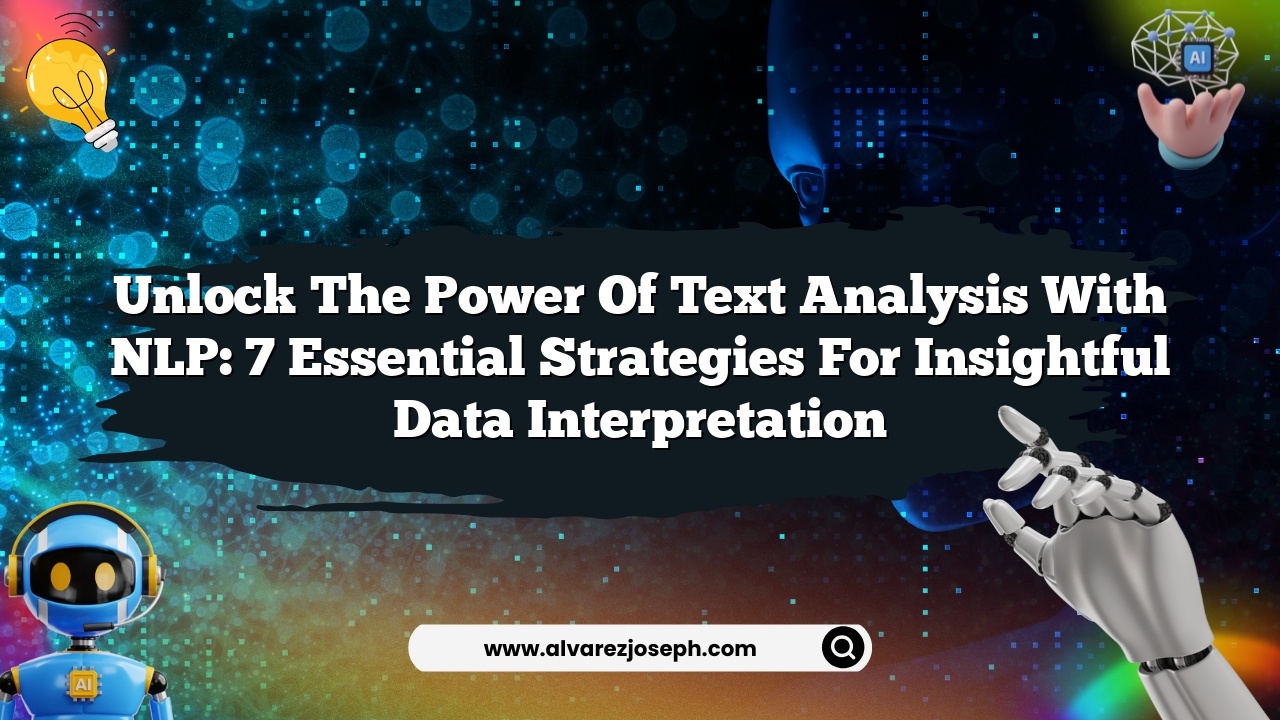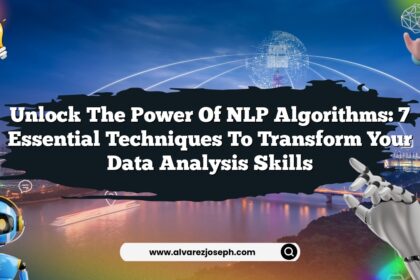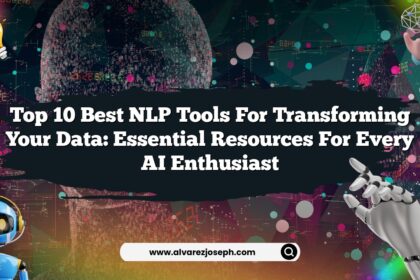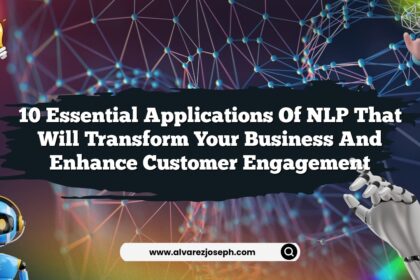Imagine a world where you could effortlessly unlock the hidden meanings behind mountains of text—where every email, blog post, or social media update could reveal insights that shape your decisions. Sounds like magic, right? But it’s not; it’s the power of Natural Language Processing (NLP). This technology allows us to analyze text data and extract valuable information from it, and trust me, it can transform your approach to data interpretation. Ready to dive into the universe of NLP and explore seven essential strategies to harness its power for insightful data interpretation? Buckle up, because we’re about to embark on a journey that could change the way you think about text!
Understanding the Basics of Text Analysis with NLP
Before we dive into the strategies, let’s break down what NLP really is. At its core, Natural Language Processing is a branch of artificial intelligence that focuses on the interaction between computers and humans through natural language. Think of it as teaching machines to understand, interpret, and respond to human language in a way that is both meaningful and relevant.
The Relevance of NLP in Today’s World
In an age where data is the new oil, NLP gives you the tools to refine that oil into something usable. With billions of texts generated every day, being able to analyze and interpret this data is crucial. Businesses leverage NLP for:
- Sentiment Analysis: Understanding public opinions about products or services.
- Chatbots & Virtual Assistants: Creating more human-like interactions.
- Content Recommendation Systems: Suggesting articles or products based on user preferences.
But hold on! How do we tap into this transformative power? Let’s explore seven essential strategies that will elevate your text analysis game.
1. Harnessing Sentiment Analysis for Better Insights
When you think of sentiment analysis, envision a virtual detective sifting through comments, reviews, and social media posts to determine whether the tone is positive, negative, or neutral. This analysis is vital for brands trying to gauge public perception.
How to Get Started:
- Use sentiment analysis APIs like Google Cloud Natural Language or IBM Watson.
- Analyze customer feedback to identify trends and improve your products.
Imagine reading through hundreds of reviews and immediately knowing how customers feel about your product. That’s the magic of sentiment analysis!
But Wait! What’s Next?
Once you have your sentiment analysis set up, you can move on to something even cooler: topic modeling.
2. Topic Modeling: Discovering Hidden Themes
Topic modeling allows you to uncover themes within large sets of text data. It’s like having a superpower that helps you find common threads in seemingly random texts.
Getting Started:
- Use libraries like Gensim or Scikit-learn to conduct topic modeling.
- Implement algorithms such as Latent Dirichlet Allocation (LDA) to categorize texts.
Imagine you’re analyzing customer support tickets. With topic modeling, you can quickly identify frequent issues and target them for resolution. It’s all about efficiency!
Curious About More?
Now that you’ve got the hang of topic modeling, let’s pivot to something that truly personalizes the user experience: keyword extraction.
3. Keyword Extraction: Your Ticket to Relevance
Keyword extraction is the process of identifying the most relevant words or phrases in a text. This strategy is crucial for content optimization, ensuring that your material resonates with your audience.
How to Implement:
- Use tools like RAKE (Rapid Automatic Keyword Extraction) or TextRank.
- Focus on generating a list of keywords that reflect the main ideas of your content.
Imagine writing a blog post and instantly knowing which keywords will help it rank better on search engines. That’s the power of keyword extraction!
But This Isn’t Where the Story Ends…
Next up, let’s talk about the importance of entity recognition.
4. Named Entity Recognition: Parsing Out the Essential Information
Named Entity Recognition (NER) is a subtask of NLP that involves locating and classifying named entities in text into predefined categories such as people, organizations, and locations. It’s a powerful way to streamline information retrieval.
How to Get Started:
- Utilize libraries like SpaCy or NLTK (Natural Language Toolkit).
- Train your NER model to identify entities specific to your industry.
Imagine having an automated system that can pick out key players in your industry from articles, saving you hours of manual research. That’s the charm of NER!
How Does This Relate to Your Business?
Now that you’re equipped with NER knowledge, let’s delve into language translation—a game-changer in global business.
5. Language Translation: Breaking Barriers
With advancements in NLP, translating text from one language to another has never been easier. This is particularly beneficial for businesses looking to expand globally.
Getting Started:
- Leverage translation services like Google Translate or Microsoft Translator.
- Integrate these services into your website or app for seamless user experience.
Imagine a customer from Spain visiting your site and being able to read all your content in their native language. That’s a surefire way to win hearts and expand your audience!
Excited for the Next Strategy?
Let’s not stop at translation; let’s look at text summarization.
6. Text Summarization: Condensing Information Effortlessly
Text summarization allows you to condense long articles or reports into digestible summaries, making information consumption easier.
How to Implement:
- Use NLP libraries like Hugging Face’s Transformers for abstractive summarization.
- Utilize extractive summarization techniques to pull out key sentences.
Picture this: you receive a lengthy report, and with a click, you have a concise summary. That’s efficiency at its finest!
But What About Data Visualization?
As we wrap up our strategies, let’s not forget the importance of visualizing the data you’ve worked hard to analyze.
7. Data Visualization: Bringing Insights to Life
Visualizing the results of your text analysis is crucial for effective communication. It helps stakeholders understand insights quickly and make informed decisions.
Getting Started:
- Use tools like Tableau or Python’s Matplotlib and Seaborn for compelling visualizations.
- Create charts and graphs that illustrate trends and patterns from your text data.
Imagine presenting your findings in a visually appealing manner that instantly captivates your audience. Now that’s a real game-changer!
Ready to Transform Your Text Analysis?
Now that you’re equipped with these seven essential strategies, the next step is to put them into practice. Whether you’re a business looking to enhance customer engagement or an analyst seeking deeper insights, NLP has the tools you need.
Quick Summary
- Sentiment Analysis helps gauge public opinion.
- Topic Modeling uncovers hidden themes in large text datasets.
- Keyword Extraction identifies critical terms for content optimization.
- Named Entity Recognition (NER) classifies important entities in text.
- Language Translation facilitates global communication.
- Text Summarization condenses lengthy texts into digestible summaries.
- Data Visualization transforms insights into engaging visuals.
Frequently Asked Questions
What is Natural Language Processing (NLP)?
Natural Language Processing is a field of artificial intelligence that focuses on the interaction between computers and humans through natural language.
How can NLP benefit my business?
NLP can help analyze customer feedback, automate responses, and provide insights that improve decision-making.
Are there any free tools for text analysis?
Yes! Several open-source libraries like NLTK, SpaCy, and Gensim offer powerful NLP capabilities.
What is sentiment analysis?
Sentiment analysis is the process of determining the emotional tone behind a series of words, used to understand customer sentiments about products or services.
Can NLP be applied to multiple languages?
Absolutely! Many NLP tools support multilingual data analysis, making it ideal for global applications.
How does topic modeling differ from keyword extraction?
Topic modeling uncovers underlying themes in a dataset, while keyword extraction focuses on identifying important words or phrases within the text.
So, are you ready to dive deeper into the world of NLP? With these strategies, your text analysis skills are bound to reach new heights!












